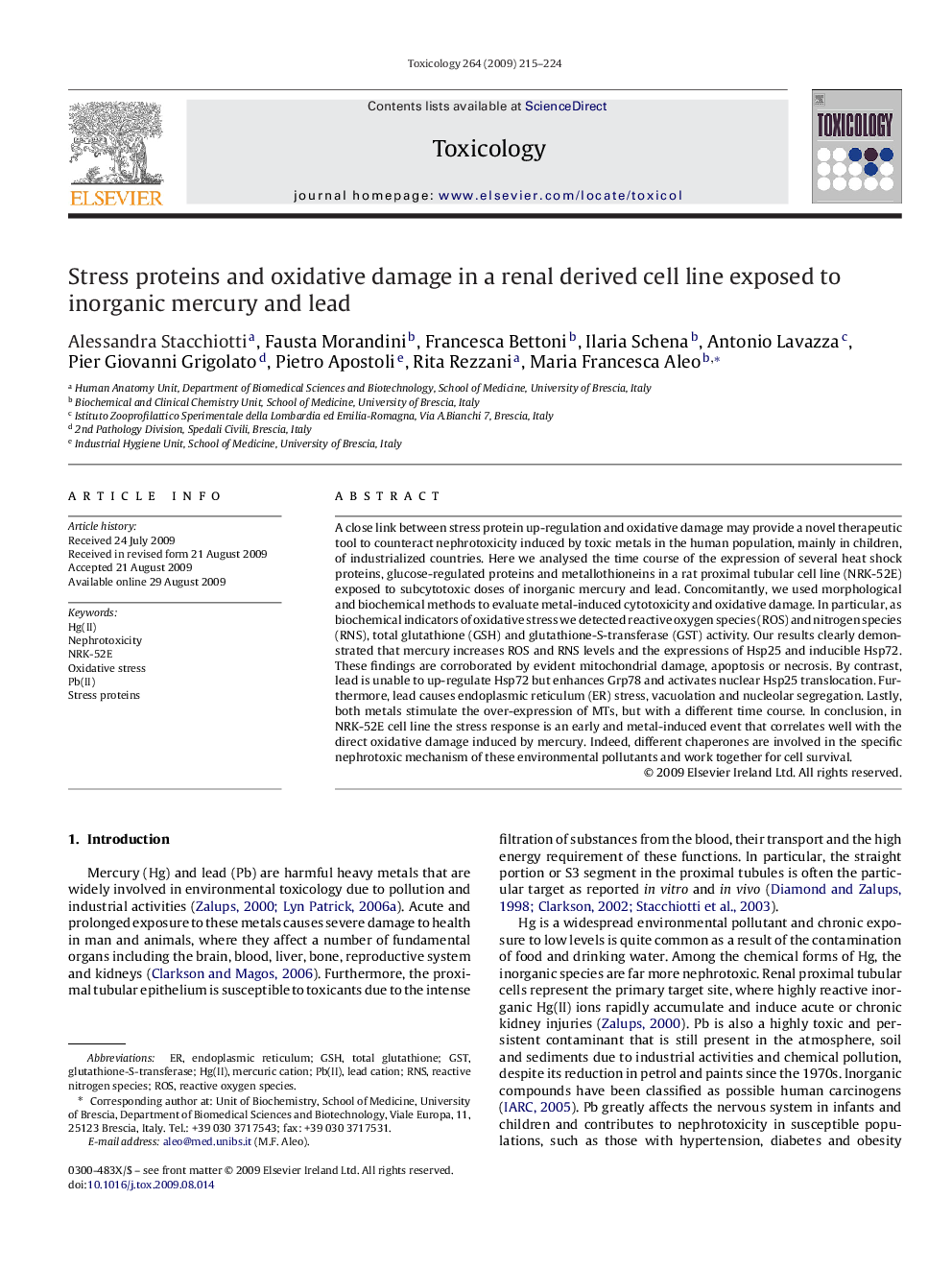| Article ID | Journal | Published Year | Pages | File Type |
|---|---|---|---|---|
| 2596380 | Toxicology | 2009 | 10 Pages |
A close link between stress protein up-regulation and oxidative damage may provide a novel therapeutic tool to counteract nephrotoxicity induced by toxic metals in the human population, mainly in children, of industrialized countries. Here we analysed the time course of the expression of several heat shock proteins, glucose-regulated proteins and metallothioneins in a rat proximal tubular cell line (NRK-52E) exposed to subcytotoxic doses of inorganic mercury and lead. Concomitantly, we used morphological and biochemical methods to evaluate metal-induced cytotoxicity and oxidative damage. In particular, as biochemical indicators of oxidative stress we detected reactive oxygen species (ROS) and nitrogen species (RNS), total glutathione (GSH) and glutathione-S-transferase (GST) activity. Our results clearly demonstrated that mercury increases ROS and RNS levels and the expressions of Hsp25 and inducible Hsp72. These findings are corroborated by evident mitochondrial damage, apoptosis or necrosis. By contrast, lead is unable to up-regulate Hsp72 but enhances Grp78 and activates nuclear Hsp25 translocation. Furthermore, lead causes endoplasmic reticulum (ER) stress, vacuolation and nucleolar segregation. Lastly, both metals stimulate the over-expression of MTs, but with a different time course. In conclusion, in NRK-52E cell line the stress response is an early and metal-induced event that correlates well with the direct oxidative damage induced by mercury. Indeed, different chaperones are involved in the specific nephrotoxic mechanism of these environmental pollutants and work together for cell survival.
